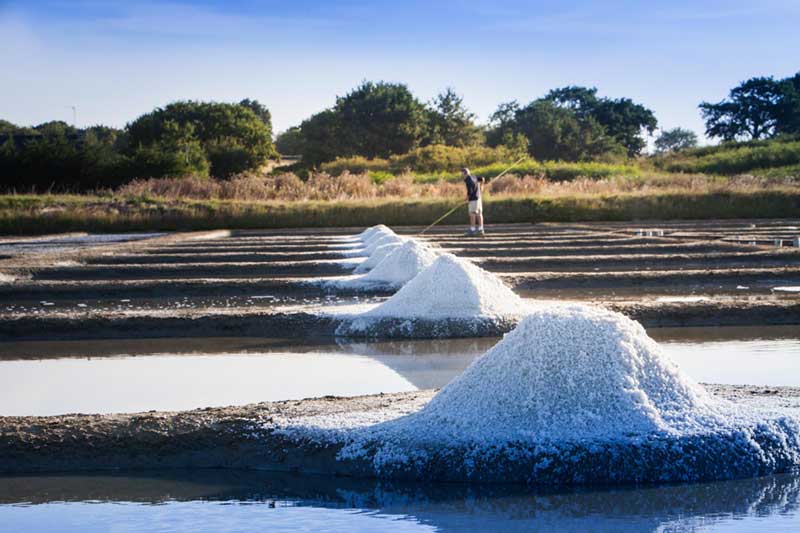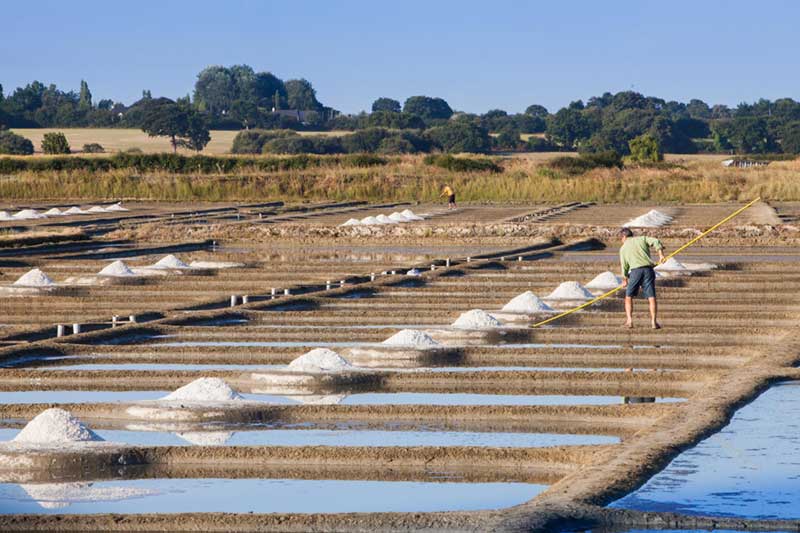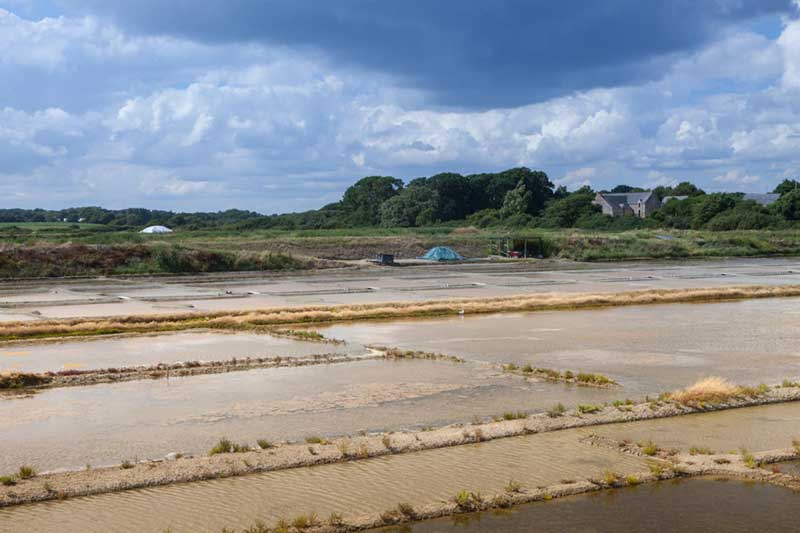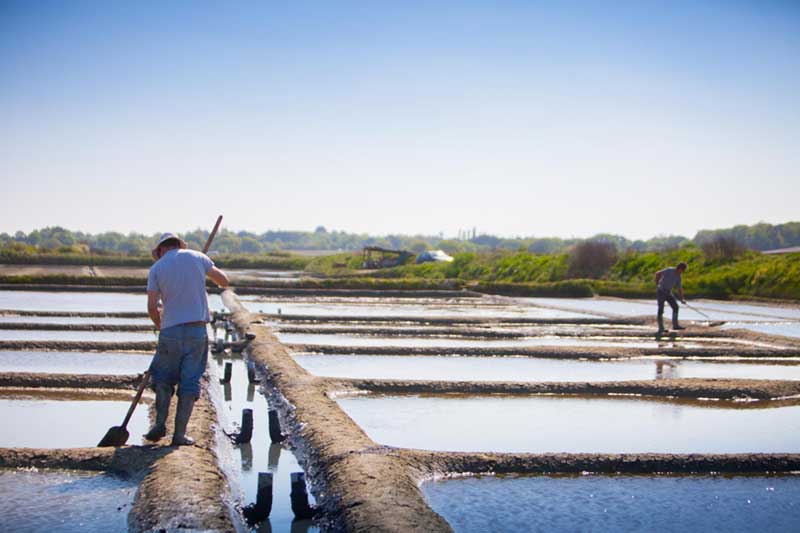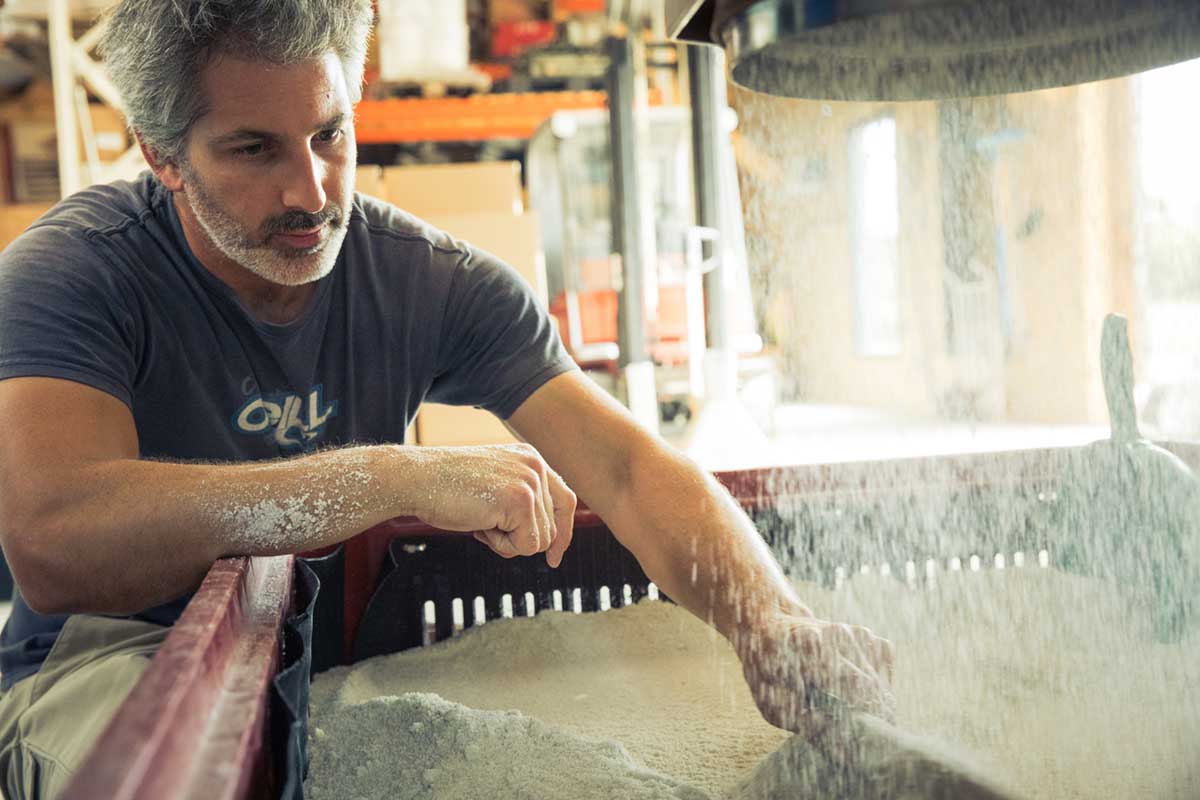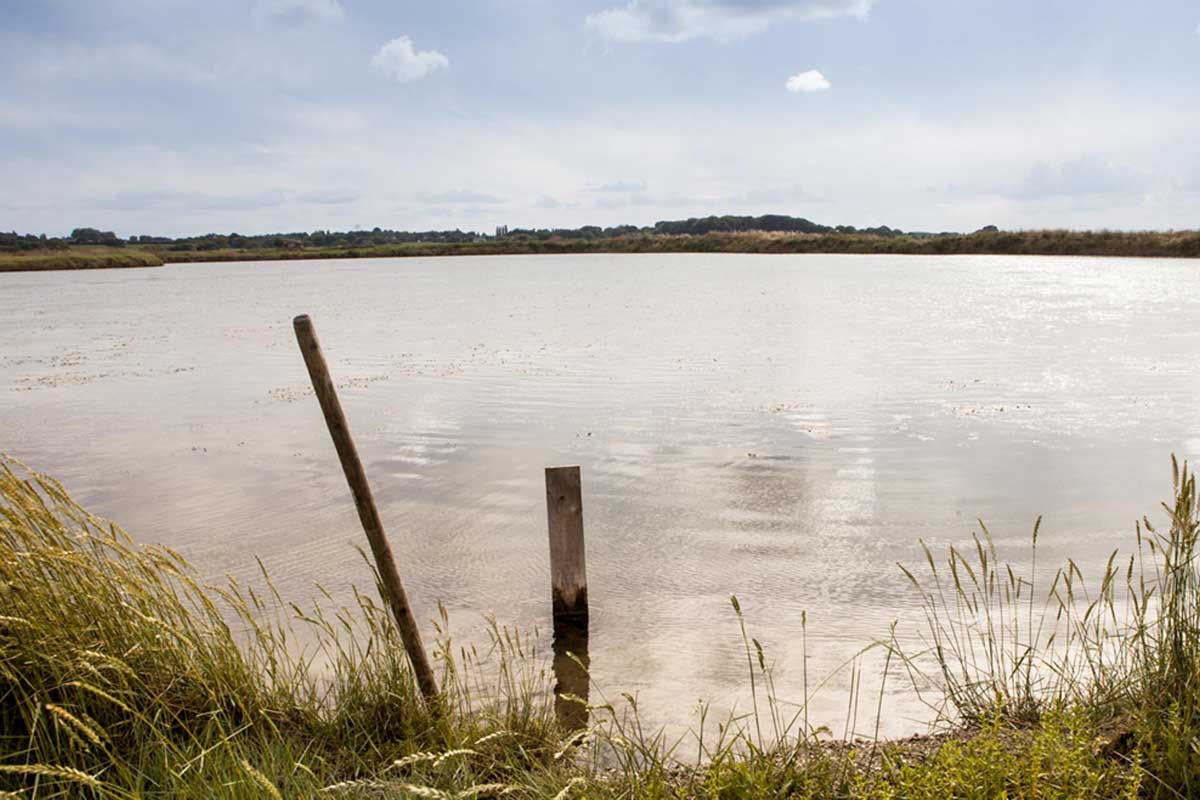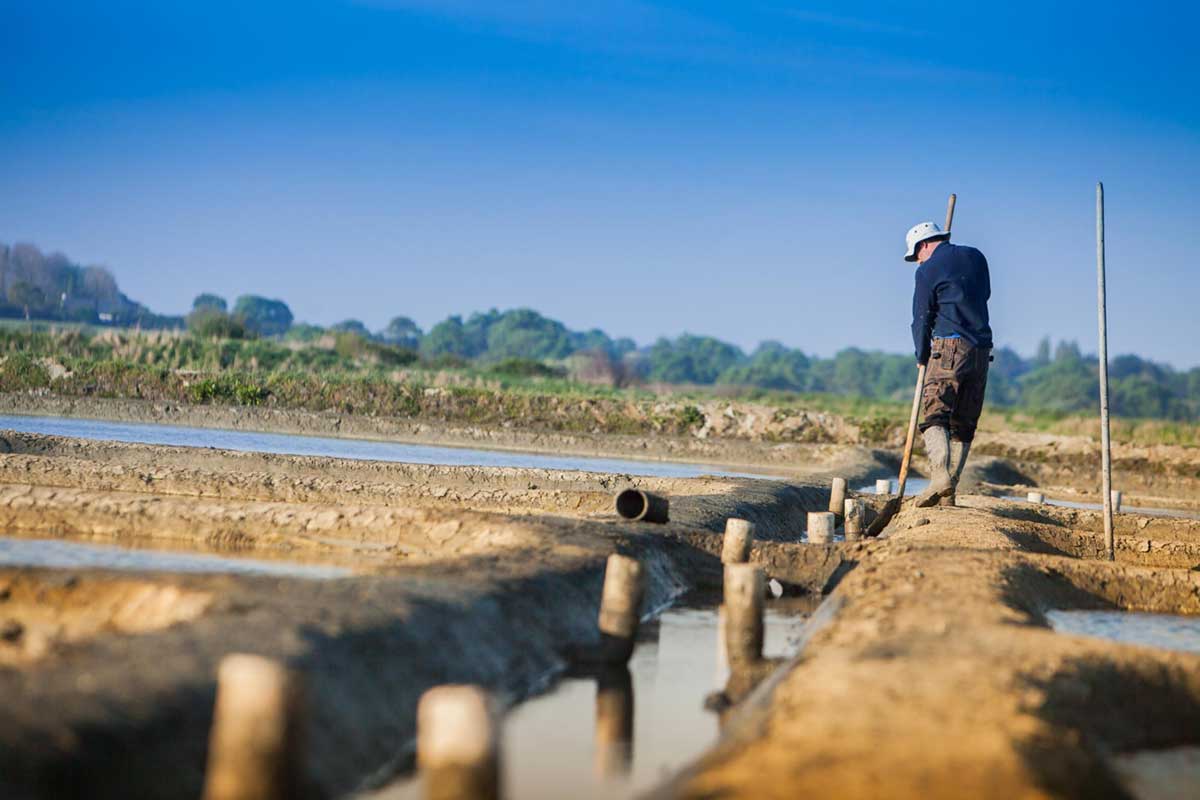The Salt Harvest is a combination
of Sun, wind and man.
The bluish grey of the Mès bassin’s clay marsh, it’s slow sedimentation and perfect waterproof capabilities helped create the perfect “cocoon” for the salt crystals. This back and forth relathionship between the salt and the clay is what finally created the “White Gold” of Guérande.
The Guerande Sea Salt Harvest
The Production of Sea salt rest’s on one fundamental principle; the evaporation of sea water by clever and precise chaneling of sea water by way of clay canals. There is about 20g of sodium chloride in one litre of sea water and in order for the crystals of salt to form we need the sea water to evaporate and thus concentrate to arrive at 240g sodium chloride per litre of sea water.
To Put it simply; we channel sea water at high tide using a traditional hydraulic system (vasière) through a sluice gate. We then force the sea water to evaporate by making it flow through a circuit (cobier, fard, adernes). As the sea water evaporates, it gains in salinity until it reaches the crystalisers (oeillet), where it forms the Salt Crystals which we then harvest during the production season (June to September).
The process is the same for the harvest of the Flower of salt, which is lightly skimmed off the crystaliser once a day during late afternoon. The formation of the Flower of salt only occurs when the wind and the sun is just right. Too much wind and it sinks, too many clouds and it cannot form. This delicate balance between sun, wind and water resumes perfectly the magic of the Salt harvesting process.
This occurs for a period of around 30 days ( not necessarily consecutive) during the harvest. On average, a crystaliser can produce from 1.8 tons to 4 tons of Sea salt per year, this all depends on the weather. Heavy shower rains or summer thunderstorms greatly dilute the salt marsh thereby reducing the process of crystalisation.
During the summer harvest we allow seawater to flow continually but in small amounts over large shallow clay pools (this allows for greater and faster evaporation). The sea water is never stagant, it is always flowing and therefore concentrating in salinity as it flows throught the circuit of the salt marsh until it reaches the centre and becomes salt in the crsytalisers. The Coarse grey sea salt harvest occurs in the early hours of the morning as the sun rises, and in late afternoon after the flower of salt has been harvested.
With time and experience, the salt marsh slowly reveals it’s secrets, and it’s ephemerial everchanging living process is a beauty to behold. Yet the Salt harvester must always stay humble and accept that the elements can also work against him, he must therefore learn to harness and work with them.
At the end of the harvesting season, we find ourselves with our annual harvest which has slowly dried on the salt marsh and that now needs to be transported back to our workshop. The year’s harvest will be transported, weighed and protected under a tarp for two years before consumption. The Harvest season is over and the salt marsh can now return to nature until next year…
Preparing the Salt and hibernating the Salt Marsh
Once the harvest is over, the salt marsh is usually put to sleep by covering it completely with seawater, we call it “drowning the salt marsh”. This protects it from winter storms, erosion and frost. The salt marsh will be woken again at the end of winter for the preparation of the next year’s harvest.
In our workshop we continue to prepare and process the previous years salt harvests, sifting, drying and packaging the salt and Flower of salt. We have a simple production line which allows us to prepare ours salts, we also think up new recipes and continue to develop our process to strive to reduce our carbon footprint, as we did with our Solar Oven.


